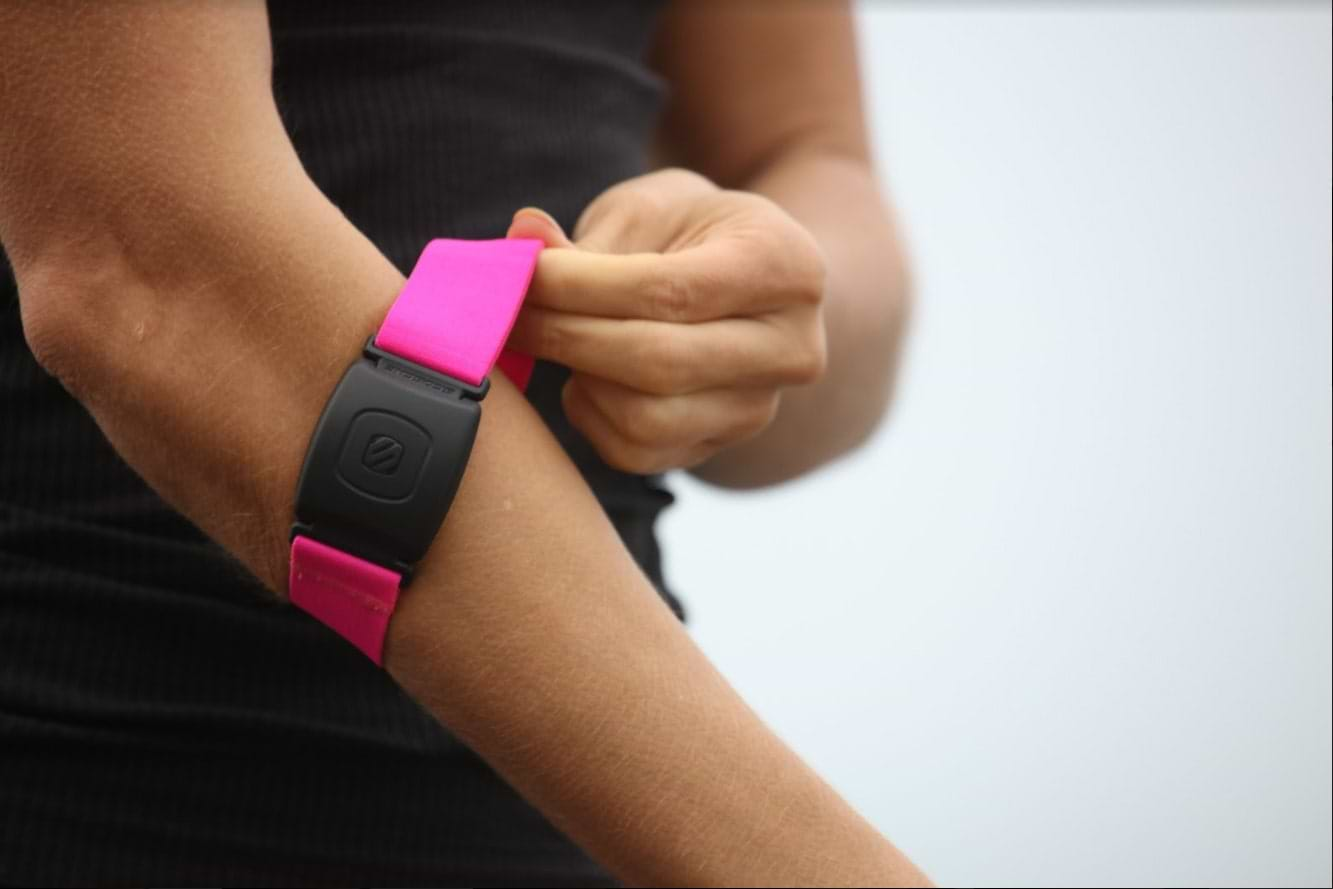Understanding Heart Rate Monitor Readings: Guide

Heart rate monitors have become increasingly popular in recent years as people become more conscious about their health and fitness. These devices offer valuable insights into our heart rate patterns and can help us understand our cardiovascular health better.
In this comprehensive guide, we will delve into the world of heart rate monitor readings, exploring the basics, interpretation, importance of heart rate zones, common misconceptions, and tips for accurate readings.
The Basics of Heart Rate Monitors
Before diving into the intricacies of heart rate monitor readings, it's essential to understand what a heart rate monitor is. Simply put, a heart rate monitor is a device that measures the number of times your heart beats per minute. It consists of a chest strap or a wristband that houses sensors to detect your heart's electrical signals.
But let's delve deeper into the fascinating world of heart rate monitors. Did you know that the concept of measuring heart rate dates back centuries? In the early 18th century, a French physician named René Laennec invented the stethoscope, which allowed doctors to listen to the sounds produced by the heart. This was a significant breakthrough in understanding the heart's rhythm and function.
Fast forward to the modern era, and heart rate monitors have become much more advanced. Today, these devices utilize cutting-edge technology to provide accurate and real-time heart rate data. The sensors in the monitor detect the electrical signals produced by your heart when it contracts. These signals are transmitted to a receiver unit, which then displays your heart rate in real-time.
But heart rate monitors don't stop at just measuring your heart rate. Many advanced models offer a plethora of additional features that can enhance your fitness journey. For example, some heart rate monitors can track your sleep patterns, providing insights into the quality and duration of your sleep. This information can be invaluable in optimizing your rest and recovery, leading to improved overall well-being.
Calories burned is another metric that some heart rate monitors can measure. By analyzing your heart rate data along with other factors like age, weight, and gender, these devices can estimate the number of calories you burn during physical activity. This feature can be particularly useful for individuals looking to manage their weight or track their energy expenditure during workouts.
Exercise intensity is yet another aspect that heart rate monitors can help you monitor. By tracking your heart rate during exercise, you can gauge the intensity of your workouts and ensure that you are pushing yourself enough to achieve your fitness goals. Whether you're aiming to improve cardiovascular endurance or burn fat, having accurate information about your exercise intensity can be a game-changer.
As technology continues to evolve, heart rate monitors are becoming increasingly sophisticated. Some models now offer features like GPS tracking, allowing you to map your routes and analyze your performance over time. Others can sync with your smartphone or fitness apps, enabling you to conveniently access and analyze your heart rate data on the go.
In conclusion, heart rate monitors are remarkable devices that provide valuable insights into our cardiovascular health and fitness. From measuring heart rate to tracking sleep patterns, calories burned, and exercise intensity, these devices have revolutionized the way we monitor and optimize our well-being. So the next time you strap on a heart rate monitor, remember the incredible journey of innovation and discovery that has led to its creation.
Interpreting Heart Rate Monitor Readings
Understanding the data provided by your heart rate monitor is crucial for effectively assessing your cardiovascular fitness. Here are the key aspects to focus on:
Understanding Resting Heart Rate
Resting heart rate refers to the number of times your heart beats per minute during periods of complete rest. It can be affected by various factors, such as age, fitness level, and overall health. Generally, a lower resting heart rate indicates better cardiovascular fitness.
When your body is at rest, your heart doesn't have to work as hard to pump blood throughout your system. This is why your resting heart rate tends to be lower than when you are engaged in physical activity. By monitoring your resting heart rate over time, you can track improvements in your cardiovascular health. For example, if you notice that your resting heart rate has decreased from 80 beats per minute to 60 beats per minute, it indicates that your heart has become more efficient at pumping blood, which is a positive sign for your overall fitness.
Deciphering Active Heart Rate
Active heart rate, also known as exercising heart rate, measures your heart rate during physical activity. It provides insights into the intensity of your workout and helps you gauge if you're reaching your target heart rate zone. This information is particularly useful for optimizing your fitness routine and achieving specific fitness goals.
During exercise, your heart rate increases to meet the demands of your body. By monitoring your active heart rate, you can ensure that you are working out at an appropriate intensity. For example, if your goal is to improve your cardiovascular endurance, you would want to maintain your heart rate within a certain range for an extended period of time. By keeping track of your active heart rate, you can make adjustments to your workout intensity to ensure you are pushing yourself enough to see progress.


Recognizing Maximum Heart Rate
Maximum heart rate represents the highest heart rate you can achieve during intense physical exertion. Calculating your maximum heart rate is crucial for determining your target heart rate zones for different fitness activities. It is generally estimated using age-based formulas.
Knowing your maximum heart rate allows you to set appropriate goals and monitor your progress during high-intensity workouts. By pushing your heart rate close to its maximum capacity, you can challenge your cardiovascular system and improve your overall fitness.
However, it is important to note that reaching your maximum heart rate should be done under the guidance of a qualified fitness professional to ensure safety and prevent overexertion.
In conclusion, understanding the various aspects of heart rate monitoring can greatly enhance your fitness journey.
By paying attention to your resting heart rate, active heart rate, and maximum heart rate, you can make informed decisions about your workouts, set achievable goals, and track your progress over time. Remember, consistency and proper monitoring are key to optimizing your cardiovascular fitness.
Importance of Heart Rate Zones
Heart rate zones are specific heart rate ranges that indicate different levels of exertion and provide valuable insights into the effectiveness of your workouts. By understanding and utilizing heart rate zones, you can optimize your training and achieve your fitness goals more efficiently. Let's explore the key heart rate zones in more detail:
Fat Burning Zone
The fat burning zone is the heart rate range where your body primarily utilizes stored fat as a source of energy. Exercising in this zone is ideal for individuals looking to lose weight or improve their overall body composition. When you exercise at a moderate intensity in this zone, your body taps into its fat stores to fuel your workout. This zone is often characterized by a steady and sustainable effort, allowing you to burn calories and shed excess fat.
Moreover, working out in the fat burning zone not only helps with weight loss but also improves your cardiovascular health. Regular exercise in this zone can lower your resting heart rate, reduce blood pressure, and enhance your body's ability to efficiently use oxygen.
Cardio Zone
The cardio zone is the moderate-intensity heart rate zone that enhances cardiovascular endurance. Working out in this zone improves your heart's efficiency, increases lung capacity, and strengthens the respiratory system. When you exercise in the cardio zone, your heart rate is elevated, but you can still maintain a conversation without feeling overly breathless.
Regular cardiovascular exercise in this zone improves the overall health of your heart and lungs. It helps to lower the risk of heart disease, improves blood circulation, and boosts your endurance levels. Additionally, exercising in the cardio zone can enhance your mood, reduce stress, and improve your overall sense of well-being.
Peak Zone
The peak zone represents the high-intensity heart rate zone where you push your limits and challenge your cardiovascular system to its maximum potential. Exercising in this zone improves your anaerobic capacity and helps you achieve peak performance. When you exercise in the peak zone, your heart rate is significantly elevated, and you may find it challenging to maintain a conversation.
Training in the peak zone is beneficial for athletes and individuals who want to improve their athletic performance. It helps to increase your maximum oxygen consumption, build muscle strength and power, and improve your overall speed and agility. However, it is important to note that exercising in the peak zone should be done with caution and under the guidance of a qualified fitness professional to prevent overexertion and injury.
Understanding and incorporating heart rate zones into your training regimen can provide you with valuable feedback on the intensity and effectiveness of your workouts. By monitoring your heart rate during exercise, you can ensure that you are working at the appropriate intensity for your goals, whether it is fat burning, cardiovascular endurance, or peak performance. So, next time you hit the gym or go for a run, pay attention to your heart rate and make the most out of your workout!
Common Misconceptions About Heart Rate Monitors
Despite their benefits, heart rate monitors are not immune to misconceptions. Let's debunk some of the common myths:
Misinterpretation of Data
One common misconception is misinterpreting the data provided by heart rate monitors. It's essential to understand that heart rate monitors are merely tools that provide information. They should be used in conjunction with other factors like perceived exertion and fitness goals to make accurate conclusions about your exercise routine.
Overreliance on Monitors
Another misconception is overly relying on heart rate monitors as the sole indicator of fitness progress. While heart rate monitors offer valuable insights, it's crucial to listen to your body and consider other factors like strength and flexibility gains, body measurements, and overall well-being to get a comprehensive view of your progress.
Tips for Accurate Heart Rate Monitor Readings
To ensure accurate readings, it's important to follow these tips:
Proper Placement of the Monitor
Properly positioning the heart rate monitor is crucial for accurate readings. Chest strap monitors should be snugly secured just below the chest muscles, while wristband monitors should be worn snugly on the wrist, aligned with the wrist bone.
Importance of Regular Calibration
Calibrating your heart rate monitor regularly is essential to maintain accuracy. Follow the manufacturer's instructions for calibration, as different models may require varying calibration procedures.
By understanding the basics, interpreting readings, recognizing the importance of heart rate zones, being aware of misconceptions, and following best practices for accurate readings, you can maximize the benefits of your heart rate monitor and make informed decisions about your fitness journey.
Conclusion
Heart rate monitors are powerful tools that provide valuable insights into our cardiovascular health and exercise effectiveness. By leveraging the information obtained from our heart rate monitor readings, we can optimize our workouts, set achievable fitness goals, and track our progress over time. Remember to use heart rate monitors as a supplement to other fitness indicators and always listen to your body. With the right approach, heart rate monitors can become invaluable assets in your journey towards a healthier and fitter lifestyle.